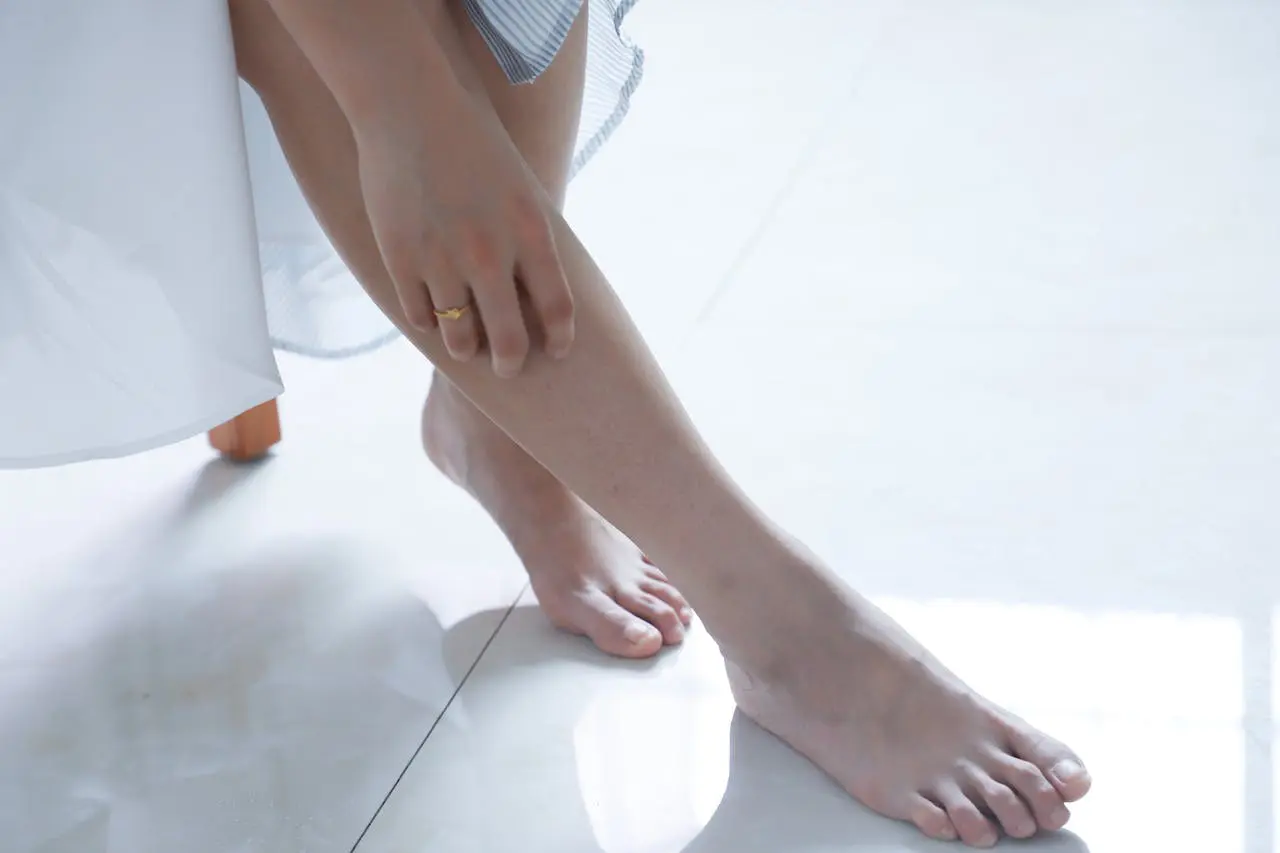
Dry skin can be itchy, uncomfortable, and downright frustrating.
The culprits behind dry skin are many. From your bathing habits to using low-quality soaps, aging, not moisturizing, and more, all these strips away your skin’s natural oil. While visiting a dermatologist is the best way to find out the cause of dry skin, there are various at-home treatments you can try to address it.
Understanding Dry Skin
Dry skin is caused by loss of moisture. When the skin’s lipid barrier gets damaged, it becomes less effective in retaining water. There are various factors behind this. Let’s take a look at them:
- Age: First up is age. As we get older, our skin becomes dull, loses elasticity, and produces less oil. As a result, it becomes susceptible to wrinkles and dryness.
- Medical Conditions: Certain medical conditions such as hypothyroidism, eczema, and psoriasis cause or worsen dry skin.
- Dehydration: Many people don’t have a habit of drinking water. It’s not something they avoid, but simply forget to consume the recommended amount daily. This leads to dehydrated skin, making it appear dull and dry.
- Environmental Factors: Exposure to windy, dry, or cold weather strips natural moisture from your skin. Even if you stay indoors, air conditioning and heating can cause dryness. This is why you need to have a robust skincare routine to protect your skin from external and internal factors.
- Harsh Soaps: Harsh soaps contain strong surfactants and detergents that remove oils and dirt effectively from the skin. While this is their plus point, it also means such soaps strip away the skin’s natural protective oils. As a result, your skin is unable to retain moisture and becomes dry.
- Hot Showers: Who would have thought that a relaxing hot shower dries out your skin? Your skin’s outermost layer, the stratum corneum is a protective barrier that locks in moisture and natural oils. When hot or scalding water touches your skin, this barrier breaks and washes away the natural oils. This leaves your skin vulnerable to dehydration.
Symptoms of Dry Skin
- Redness
- Itchiness
- Flakiness or peeling
- Wrinkles and fine lines
- Tightness
Dry Skin Treatments
A dry-free skincare routine demands four things:
- Drink Plenty of Water: Keeping your body well-hydrated is the best way to combat dryness.
- Moisturize: Opt for a moisturizer with ceramides, glycerin, or hyaluronic acid to lock in moisture.
- Cleanse Your Skin: Fragrance-free cleansers with no chemicals keep your skin soft and supple.
- Exfoliate: Exfoliation helps remove dead skin cells and allows the moisturizer to penetrate your skin more effectively.
Now, let’s move on to the DIY treatments:
1. Make an Olive Oil Moisturizer
Olive oil contains squalene, antioxidants, and Vitamin E that help repair damaged skin. It is rich in oleic acid, which is a natural emollient. Emollients close the gaps between skin cells, which helps prevent water loss. On dry skin, olive oil forms a protective barrier that hydrates the skin, giving it a smoother surface.
Refrain from applying olive directly on the skin as it might cause acne. Mix two tablespoons of olive oil and aloe vera gel in a container. You can add a few drops of essential oil to give the moisturizer a pleasant smell. Apply it at night, before going to bed, to give the moisturizer more time to absorb into the skin.
2. An Oatmeal Bath
Oatmeal is not just a nutritious breakfast cereal. It has several properties that make it beneficial for the skin. Oatmeal contains fats and lipids that moisturize the skin. It contains avenanthramides, a group of phenolic alkaloids only found in a few foods. Its anti-inflammatory properties reduce inflammation, itchiness, and redness associated with certain skin conditions, including psoriasis and eczema.
To prepare your oatmeal bath, grind oatmeal into a fine powder and add it to your bathtub. Add a few drops of Lavender essential oil for relaxation, and let the oatmeal soak for 20 minutes. Do not use soap to clean yourself. Stay in the bathtub for 15 minutes, then rinse your body with lukewarm water. Apply a moisturizer on your damp skin to keep it hydrated all day.
3. Apply Coconut Oil Directly
At room temperature, coconut oil becomes solid and can be used as a moisturizer before bedtime. The following four components in coconut oil help combat dry skin:
- Vitamin E: As a natural antioxidant, Vitamin E protects the skin from oxidative stress and free radicals.
- Phytosterols: These are plant compounds that calm irritated skin.
- Lauric Acid: This fatty acid has antimicrobial properties that protect the skin from harmful microorganisms.
- Fatty Acids: Capric and caprylic acids are natural emollients that soothe and soften the skin, relieving it from flakiness and dryness.
Take a small amount of coconut oil in the palm of your hand and rub it between your hands to create warmth. Gently massage it on your skin and let it stay for 20 minutes. Wash your face with a mild cleanser.
4. Treat Dry Patches with Honey
Honey is a natural humectant. It not only attracts moisture but also retains it. One of the best things about this golden-brown viscous liquid is that it strengthens the skin’s natural barrier. It is tolerated well by most skin types, making it ideal for overall body application.
There are plenty of ways to use honey. You can apply it as it is or create a mask with other ingredients, including oatmeal (mild exfoliator), aloe vera, yogurt, and olive oil. Create a paste with honey and any one of these ingredients, apply it on your skin, leave it for 20 minutes, and rinse with lukewarm water.
5. The Hydrating Properties of Cucumber
Cucumber is made of 95% water and is considered the most hydrating vegetable. Applying it to the skin gives it a hit of moisture and instant relief. You are probably familiar with the sight of cucumber slices placed on the eyes. This helps reduce puffiness.
For dry skin, blend cucumber and aloe vera. Dip a cotton ball into the mixture and gently scrub and clean your skin with it. Wash your face with lukewarm water.
Remember that every person’s skin is unique. So, it will take time and a little experimentation to find a treatment that works best for you. Always do a patch test to ensure you are not allergic to the ingredients you apply.
Suncoast Skin Solutions offers Medical Dermatology Treatments that address dry skin. They use medical-grade skincare products in their treatments to ensure lasting results. If you have any questions regarding their treatment, call 1-844-SUNDERM
SunCoast Skin Solutions Dermatology offices are located in Tampa / Hillsborough, St. Pete / Pinellas County, Brandon, Lutz, Winter Haven, Largo, Hudson, Leesburg, Jupiter, Lecanto, Riverview, Brooksville, Clearwater, Ocala, Palm Harbor, Daytona Beach, Sarasota, Punta Gorda, Seminole, (Inverness, Port Charlette, Port Saint Lucie coming soon), Florida. Contact us at 1-844-786-3376 or click here.

Recent Comments